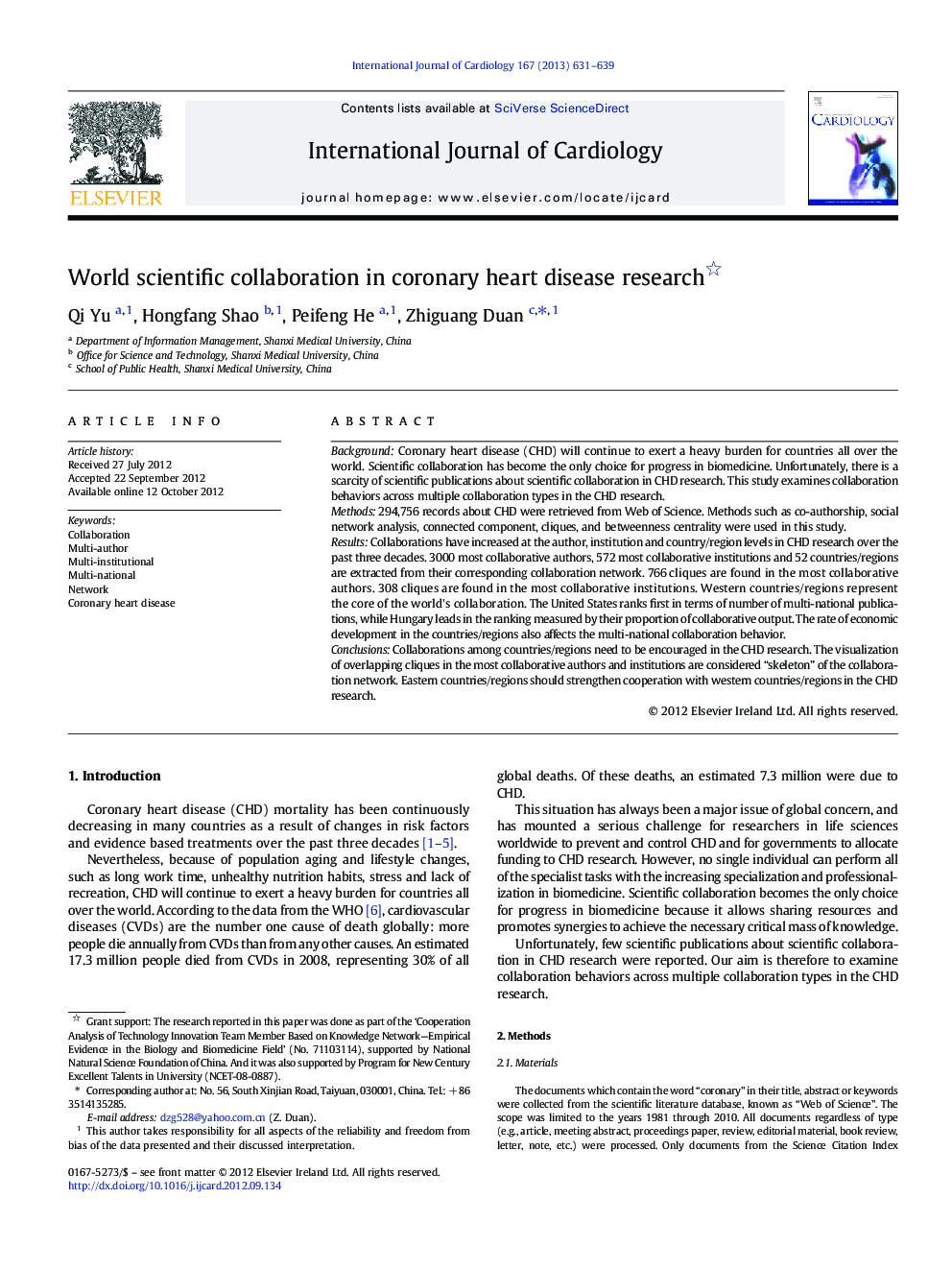| Article ID | Journal | Published Year | Pages | File Type |
|---|---|---|---|---|
| 5974735 | International Journal of Cardiology | 2013 | 9 Pages |
BackgroundCoronary heart disease (CHD) will continue to exert a heavy burden for countries all over the world. Scientific collaboration has become the only choice for progress in biomedicine. Unfortunately, there is a scarcity of scientific publications about scientific collaboration in CHD research. This study examines collaboration behaviors across multiple collaboration types in the CHD research.Methods294,756 records about CHD were retrieved from Web of Science. Methods such as co-authorship, social network analysis, connected component, cliques, and betweenness centrality were used in this study.ResultsCollaborations have increased at the author, institution and country/region levels in CHD research over the past three decades. 3000 most collaborative authors, 572 most collaborative institutions and 52 countries/regions are extracted from their corresponding collaboration network. 766 cliques are found in the most collaborative authors. 308 cliques are found in the most collaborative institutions. Western countries/regions represent the core of the world's collaboration. The United States ranks first in terms of number of multi-national publications, while Hungary leads in the ranking measured by their proportion of collaborative output. The rate of economic development in the countries/regions also affects the multi-national collaboration behavior.ConclusionsCollaborations among countries/regions need to be encouraged in the CHD research. The visualization of overlapping cliques in the most collaborative authors and institutions are considered “skeleton” of the collaboration network. Eastern countries/regions should strengthen cooperation with western countries/regions in the CHD research.
